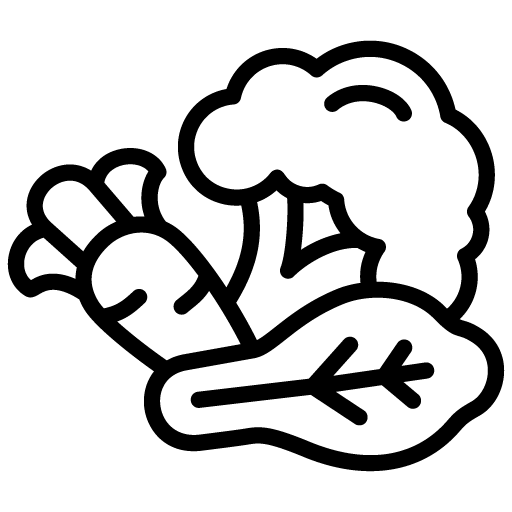Vegetarians aside, who doesn’t like a steak right off the grill? Or a filet of Alaskan king salmon or a lobster tail dripping with butter?
Proteins are extremely important. They make up almost everything in our bodies: organs, muscles, skin, hair, nails, blood, bones, enzymes, hormones, neurotransmitters, shuttles, messengers, etc. In addition, they are an alternate source of energy when we run low on sugar.
What are proteins?
Proteins are long chains of amino acids held together with peptide bonds. They are classified into 3 categories:
- Essential -which we get from our diet
- Non-essential -which can be made by the body as we need them
- Conditionally-essential amino acids which we may need to supplement if our bodies cannot meet the demand
Why is it important to eat enough protein?
Our bodies store amino acids in a pool to be used by any system that needs them. But just like a swimming pool that’s leaking, if you don’t eat enough protein, your “pool” becomes depleted. If your pool is low and you happen to need to restore your blood sugar or respond to some illness or injury, your body will scavenge amino acids by stripping proteins from less-important sources to meet its more important needs.
So what are those “less-important” sources? The gut lining, muscles, collagen, and skin along with carrier proteins like albumin. The amino pool gets drained pretty quickly, so you need to consume all the essential amino acids in the correct amounts every day.
Are all proteins the same?
There are 2 types of proteins:
- Complete – which contain all 9 of the essential amino acids
- Incomplete – which may have all 9, but not in sufficient quantities to meet the body’s needs
The goal of a balanced diet is to consume an adequate amount of each essential amino acid– in the right proportions to satisfy your daily requirements.
Only animal sources are considered to be a “complete” protein. To be fair, tofu does contain all of the essential amino acids, but is deficient in methionine and tryptophan. Grains and some other plant foods also contain all of the essential amino acids, but like tofu, they do not equal the levels that are found in a complete protein. So, even if all the essential amino acids are present, too little of any one of them will limit your ability to make effective use of the others.
Can I combine foods to make a complete protein?
It is possible to obtain all 9 essential amino acids by combining several kinds of vegetable protein—i.e., grains + legumes—but you might have to eat a pretty significant amount of those combinations to get 100% of the amino acids you need.
For example, corn and beans are both low in tryptophan and methionine. Corn is also low in lysine. Corn contains more essential amino acids than beans when it comes to 5 of the amino acids, but beans can help balance the corn in the other 4. That’s why beans and corn are often served together. If you eat a vegetarian diet, you need to become pretty proficient at balancing the amino acids.
Food combining may create additional problems. Since you need to consume such large amounts of particular foods to get the proper level of each amino acid, you might be too full to eat anything else—-which could lead to nutrient deficiencies. Second, your blood sugar may shoot sky-high from eating too many carbohydrates.
What is protein accessibility?
This is a more technical reason why animal protein is more nutrient dense.
The usability of protein is its digestibility and its biological value. Digestibility is the percentage of protein in a food that the body can absorb. Biological value represents the percentage of the absorbed protein that the body can actually make use of.
If we multiply these values together, we get something known as the net protein utilization (NPU), which represents the total percentage of the protein that the body can actually use. Animal proteins have a higher NPU value than vegetable proteins do. Foods with a high NPU can be eaten in smaller quantities, making it possible to easily limit your caloric intake for the day.
By combining both quality and accessibility, we can see that animal proteins may be better than plant proteins when it comes to meeting our nutritional needs.
Does cooking change proteins?
When we cook a protein, we change its physical structure. This denatured protein may be altered enough that it confuses the immune system into thinking it is something foreign. Over time, his may lead to food sensitivities.
It is a good rule of thumb to try to process our foods as minimally as possible. You might consider adding foods such as sashimi, poke, ceviche or lox to your diet as raw protein sources.
How much protein do I need to eat?
An average person needs about 0.8 grams of protein per kilogram of body weight per day, which is equivalent to 0.36 grams of protein per pound of body weight per day. An average 130 pound-woman would need about 8.6 ounces per day or 46.8 grams. Those who want to maintain muscle mass might be better off with 1.0 g/kg rather than recommended 0.8 g/kg, while athletes may require even more: anywhere from 1.4 to 1.8 g/kg to help build muscle mass.
A much simpler method is just to divide your weight by 15 to get the number of ounces you need per day. Mathematically, this conversion may not make sense, but since an animal protein consists of water, fat, and protein, each source contains a different proportion of actual protein. The denser sources are somewhere between 7 to 9 grams of protein per ounce.
You might be surprised how little animal protein you actually need to consume each day. Just a small 4-ounce portion of salmon, for example, contains over 27 grams of protein. Check out the USDA’s Nutritional Database to see how to meet your daily needs eating plant and animal sources.
Can I eat too much protein?
Even at its maximum capacity, the liver can only convert proteins into about 400 grams of sugar or 1,600 calories per day. According to the International Journal of Sports Nutrition, protein intake greater than 35%, can lead to “…hyperaminoacidemia, hyperammonemia, hyperinsulinemia nausea, diarrhea, and even death (the ‘rabbit starvation syndrome’).”
Proteins can be used as an energy source. We have about a 24-hour reserve supply of stored sugar. After that, the body starts to break down fats and proteins to create glucose. Proteins are made up of carbon, hydrogen, oxygen, and nitrogen. Since sugar doesn’t require nitrogen, it must be removed. This process is called deamination and results in the formation of keto acids and ammonia. Very high ammonia can affect the kidneys. Signs of too much protein may be nausea, diarrhea, weight gain, dehydration, loss of minerals, brain issues, and kidney disorders.
Ever heard of rabbit starvation syndrome?
Rabbit starvation syndrome was experienced by early explorers such as Lewis and Clark, who—for lack of other game—had to rely on rabbits as their only food source. Unfortunately for them, rabbits are one of the leanest animals on earth, and no matter how much those early explorers ate, they were never full. Due to the negative health effects of too much sheer protein described above, many explorers perished until they learned about pemmican from the Native Americans—pemmican was a mixture of berries, animal protein, and fat (fat made up about 50% of the mixture).
How much protein do you recommend I eat everyday?
Proteins are an important and essential part of our daily diet. The mild ketogenic diet I recommend equates to around 20-25% of our calories as dietary protein per day. Proteins from grass-fed/pastured animals are the best sources of animal protein. Since proteins should be eaten with fat, I recommend removing the fat from non grass-fed game or farmed fish.









